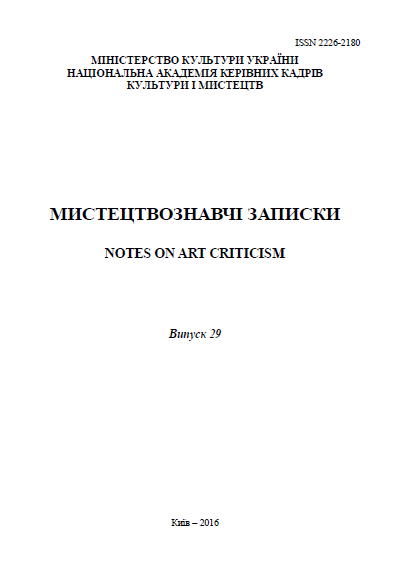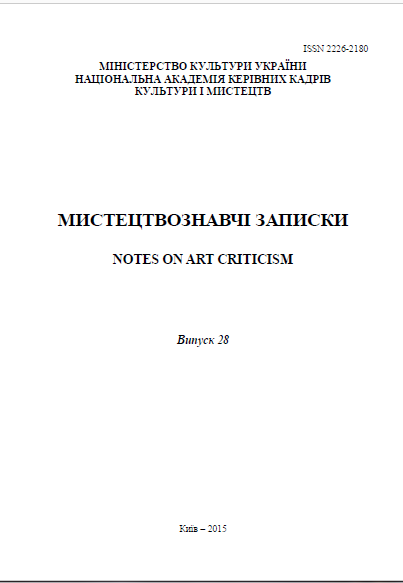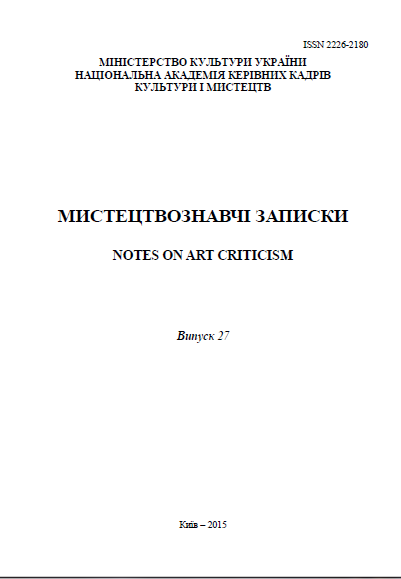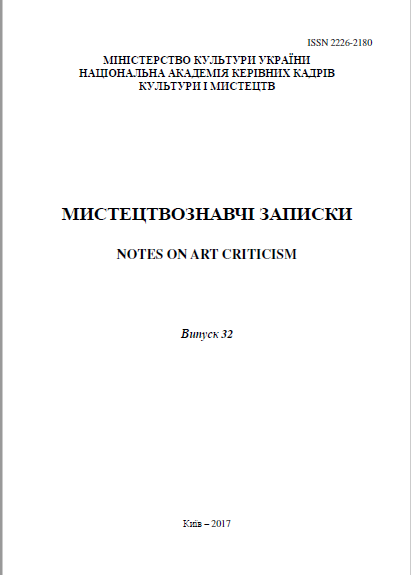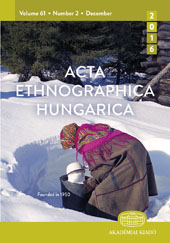Author(s): Lesya Pavlenko / Language(s): Ukrainian
Issue: 35/2015
The article discusses the kobza art as an original phenomenon of the Ukrainian national culture. The attention is focused on the musical creativity of the kobzars in the XVIth-XVIIth centuries as the bearers of the national epic tradition, Christian morality and original repeaters of the collective memory of the nation as a whole. It is noted that the mainly the basis of the vocal and instrumental repertoire consisted Cossack's thoughts and historical songs, accumulating the historical memory of the ethnos. Kobza roots date back to Kievan Rus. A very common musical phenomenon in Ukrainekobza became popular, from the XV century. It is in the depths of Kobzar culture formed the basic principles and techniques of playing an instrument and repertoire wandering musicians. Kobzarstvo as a unique phenomenon of Ukrainian culture that period should be seen not only in the musical sense, but also in the unity of the historical and cultural ties. It is formed kobzarstvo folk culture, obumovlyuyuchys certain socio-historical factors and passed a difficult way to the formation and development. The first historical mention of the fixed harpers dating from XV – XVI century.and show only the names of the performers kept separately, their repertoire, social origins. Historical songs, thoughts, moralistic religious songs and other copyrighted works accompanied by minstrels playing the kobza, bandura and the lyre, so they still called lyrists or bandura players. Quite active development of musical creativity wandering blind musicians in Ukraine falls on the day XV-XVI centuries. Most researchers emphasize the uniqueness kobza phenomenon and its profound identity. A characteristic physiological defect folk singers and performers that distinguished them from the rest of society, and which became poet, was Sightlessness blindness that occurred for various reasons. In fact, it was a special layer of people, which is treated with respect and honor for the level of musical and singing talent. Aside from music, minstrels-blind because of his lifestyle and character of occupation were somewhat educators, communicators, spreading not only singing, but also other socially meaningful and useful information. Often they are a good addition to singing and playing on Kobza could cure were healers, diviners, even performing certain religious rites. Kobzarstvo biggest development reached at the time of the Cossacks. Since the end of the XVI century.harpers career was inextricably and closely linked to the Cossacks, becoming an integral part of the Cossack culture, also gave identity. Kobzar played an important role in the Cossack environment: it has accumulated a part of the cultural heritage and oral traditions – songs, thoughts, traditions, military customs, rules of coexistence separate Cossack society, the foundations of war. Given the growing number of musicians wandering harpers, then they begin to associate in professional workshops, namely kobzarstvo reached a new, more professional stage of development. New value kobzar movement becomes the days of Hetman Bohdan Khmelnytsky, Ivan Samoilovich, IvanMazepa. Organizationally it was kind of trade unions, fraternities, music schools, which taught music and singing skills in teaching students and masters and apprentices. These institutions functioned quite officially, with the founding documents in the form of the statute and its own seal and symbols – shop signs and flags with emblems. Formation kobza tradition was against the backdrop of Ukrainian Baroque culture that largely caused the development of philosophical features folk singers and musicians. Conventionally cultural space of time, as social stratification, experienced division into three main layers – the clergy, the military people and workers. With the advent of traveling singers, harpers who were kind of mediums – intermediaries between the peasants and townspeople, formed the necessary cultural and information flow, a significant difference between the divisions of public starred, combining spiritual, literary culture and grassroots people. For a significant period of the Cossack's art foundation repertoire of folk genre kobzar distribution group was epic works – Duma and historical songs that showed high high professional skill of the artist. Traditionally Duma classified into groups: Captives Duma – laments and thoughts-memories of the Turkish-Tatar captivity; historical, which are divided into the Duma to the Khmelnytsky period and thereafter, and include mention of specific historical characters; Home – devoted to the events in the life of anonymous characters, their relationships with relatives. National, cultural and spiritual phenomenon kobza was in keeping old traditions singing, isolating harpers a separate social condition of the population. Historical bases of formation of the Cossack's art is an essential component for the modern musical performance improvement and outline the prospects for its development.
More...

